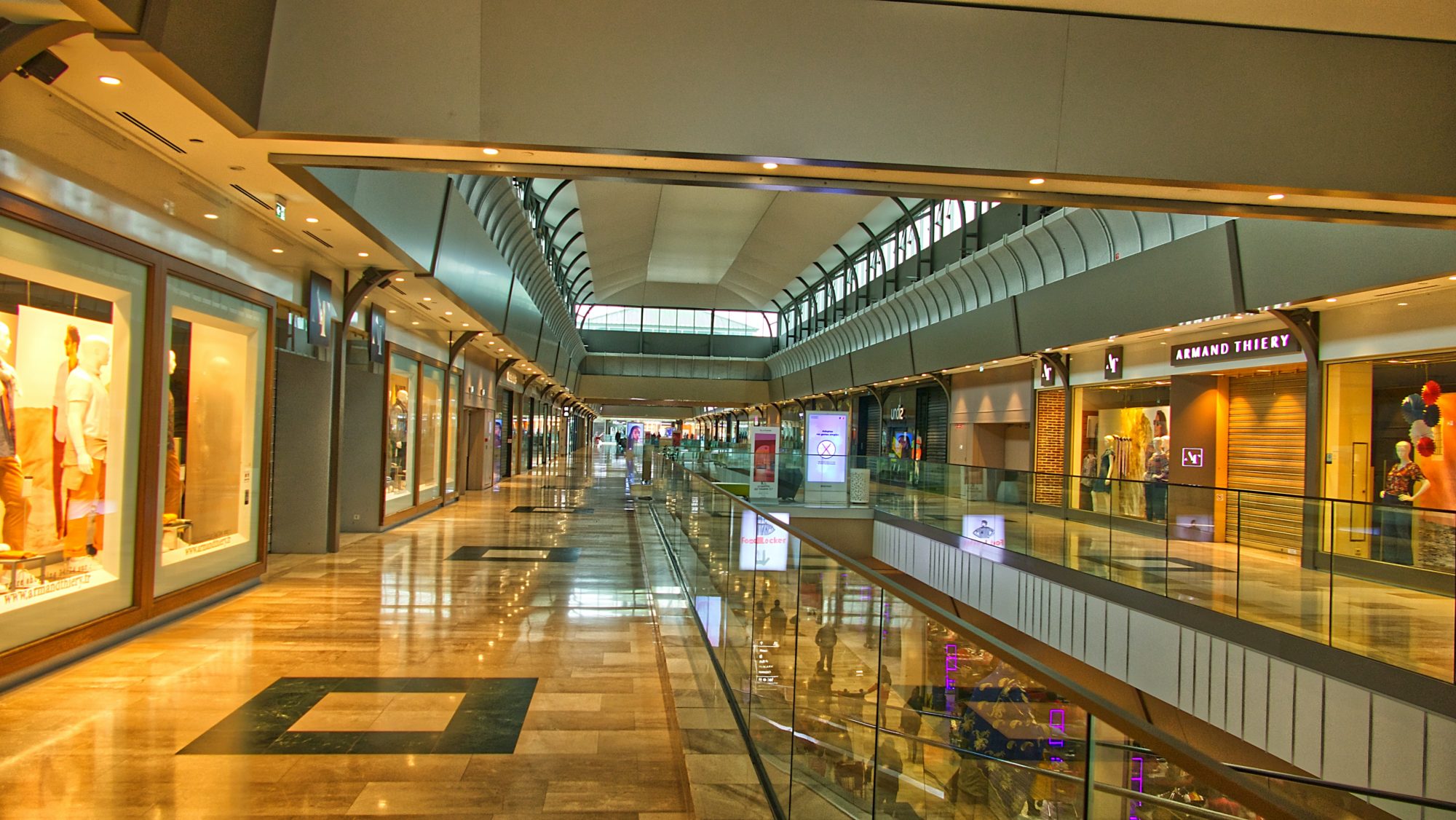
Shopping Centers Look to Refresh Existing Retail Space
Between online buying and the limitations of the pandemic, the past few years have been difficult for brick-and-mortar stores. Even before the pandemic, shopping centers struggled to keep spaces filled, and some retail businesses didn’t survive the recent tough times, so there are many empty storefronts in most centers. With the available vaccine and lifted restrictions, people are shopping again. Traditional shopping centers are looking for ways to capitalize on the improving market. Many centers are changing their focus, rebranding, or refreshing their look to appeal to more customers and attract new retail tenants through shopping center renovation.
Refreshing Landscaping and Signage
A relatively inexpensive avenue for refreshing a shopping center’s look is making changes to the buildings, entrances, and parking areas. Adding and changing landscaping, including adding grassy park-like areas with trees, can better impact potential leasers and make visiting the center more appealing to customers. The softer and homier a center appears the better people will connect to it. Another element of shopping center renovation is adding greenery as it appeals to consumers concerned with environmental problems.
Name changes and updated signage can bring attention, too. For example, changing from the XYZ Mall to the Cambridge City Center changes the emphasis and encourages visits because people want to see what’s different about the mall. Even without a name change, new, modern, lower profile, well-lit signs freshen a center’s look and are more appealing to potential tenants. Attractive and efficient LED lighting saves energy, too.
Updating Architecture
Old, outdated architecture can make a negative impression on visitors. According to Wikipedia, malls were being built at a rate of about 140 a year in the mid-1990s. Malls and centers constructed in those years had a certain look. Muted colors, gothic architecture, country marketplace looks, stylized sign fonts, and clock towers were some of the mainstays, and if not updated, they appear old and unwelcoming. Malls built in the 1960s and 70s may have been updated in the 90s or early 2000s but probably need another refresh in 2022.
By modernizing building facades, a center becomes more inviting to both consumers and retailers. Lighting changes inside and out to create a warmer mood can bring people in to shop. Any dramatic visual changes bring new attention to a shopping center. Architecture should convey a sense of community, like a neighborhood shopping district. Architecture should make people feel connected and welcome.
Adding Office or Housing Space
Many shopping areas are converting some space into offices or adding new office buildings on the property. One option is using empty anchor stores for offices. Another is adding a standalone structure. Adding office space within the mall is also a possibility. For example, one wing of the Marley Station Mall in Baltimore, Maryland, became a data-center company. By bringing non-retail businesses into the mix, they increase the traffic automatically. People who work in the offices and those who visit these new businesses find shopping in the surrounding stores convenient. The flow of cars in and out of the parking lot daily gives a more positive impression for potential retail leasers.
In larger malls with lots of empty space, hotels and apartments have been added. Housing was needed in the Providence, Rhode Island area, so a local shopping mall added micro-lofts, 225 square foot apartments in the upper part of the mall. In Lynnwood, Washington, a portion of the mall, including the large, empty Sears store, has become a 300 unit apartment complex called Avalon Alderwood Place.
Adding Experience-Based Businesses
Since you can order just about any merchandise online, these days, consumers want more than goods from a shopping center. They want experiences. Offering consumers the experiences they want can be a great way to bring them into the mall. More traffic means more retail business. Restaurants, mall eateries, and movie theaters are a good start to making a mall a destination, but many more possibilities exist. According to an article in Forbes Magazine:
“The major challenge for malls is to view retail spaces in a new way, not as primarily places to connect consumers with products, but as places where people engage with brands, experiences, entertainment, service providers, and even live and work.”
The article talks about discovering and fulfilling the needs of the local community. Adding activity and entertainment venues that might appeal to those in the community can revitalize a shopping center. What businesses a shopping center chooses to add should depend on the clientele.
If there are many families in the area, for example, by adding a gaming center or kids’ indoor play area, the mall becomes more than a shopping venue. Malls have converted empty anchor stores into trampoline facilities and indoor racetracks. Others have performance venues or a local museum. Maybe a gym would be a good choice, especially if there are offices nearby. Changes and additions should reflect community needs. A mall or shopping center needs to become a community center that includes retail rather than solely a shop-for-merchandise location.
To attract customers and fill empty stores, shopping centers and indoor malls are changing their look and changing their focus. They update their architecture and signs, improve lighting, and add attractive and inviting landscaping. While consumers want to shop, they want a center to offer more. Rather than concentrating exclusively on merchandise shopping, many places are adding other types of businesses and offerings to the mix. When combined with retail stores, offices, or housing, work to bring people into stores. Changing a center’s offerings from shopping only to shopping and experiences makes it a destination for the community’s residents and visitors.
Want to know more about how MDC can help? Drop us a line!

